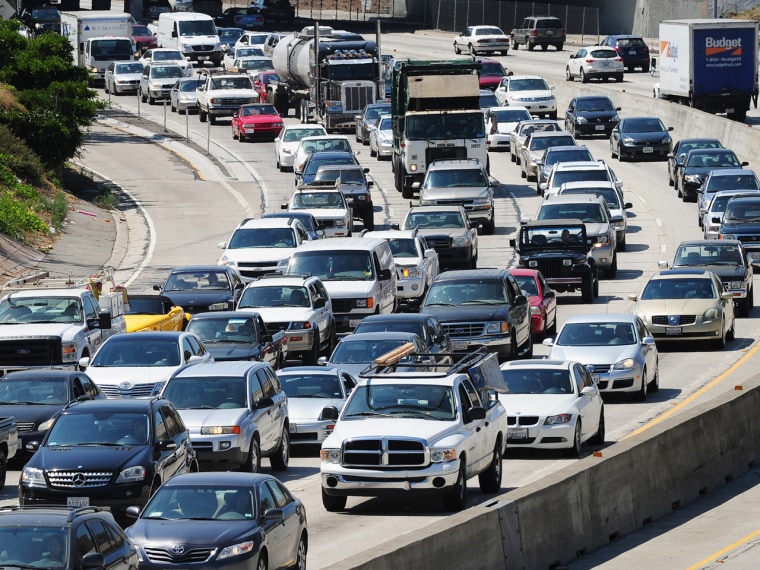San Francisco may be testing smart self-driving cars, but farther south, Los Angeles is still battling dumb traffic. To speed things up (a bit), the city has synchronized 4,000-something traffic lights, becoming the first city in the world with such a system, the New York Times reports.
One might imagine this would lead to drivers across the city swearing in unison as they hit red lights at the same time, but it's far more complex than uniform timing.
Magnetic sensors at street corners funnel real-time information about traffic flow into a central system, which then predicts where congestion will take place. If tweaking signal times could help traffic move quicker — say, speeding up turnover at an intersection — the software or a human operator makes it happen.
After 30 years in the works, the plan went live in February, and the results of the change are trickling in. Average driving time has fallen — it used to take 20 minutes to drive 5 miles, but now it just takes 17.2. And, the average speed has gone up: from 15 miles per hour to 17.3 mph, the Times reports.
The goal is to raise the travel speed by 16 percent, and reduce travel time by 12 percent, L.A. authorities said when they first introduced the scheme.
In Tennessee, Nashville and its suburb, Brentwood, may get their lights synced as well.
Perhaps this will take off as a partial solution to gridlock across America. However, there are some who argue light syncs aren't a healthy long-term approach to traffic — they just lead to more cars on the road.
Nidhi Subbaraman takes the subway. Follow her on Twitter and Google+.
